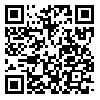Volume 76, Issue 7 (October 2018)
Tehran Univ Med J 2018, 76(7): 492-497 |
Back to browse issues page
Download citation:
BibTeX | RIS | EndNote | Medlars | ProCite | Reference Manager | RefWorks
Send citation to:



BibTeX | RIS | EndNote | Medlars | ProCite | Reference Manager | RefWorks
Send citation to:
Ebrahimian A, Fakhr-Movahedi A, Ghorbani R, Ghasemian-Nik H. Development inverse triage system in intensive care units using APACHE II scoring system for emergency situation: brief report. Tehran Univ Med J 2018; 76 (7) :492-497
URL: http://tumj.tums.ac.ir/article-1-9117-en.html
URL: http://tumj.tums.ac.ir/article-1-9117-en.html
1- Nursing Care Research Center, Semnan University of Medical Sciences, Semnan, Iran.
2- Social Determinants of Health Research Center, Semnan University of Medical Sciences, Semnan, Iran.
3- Student Research Committee, Nursing and Midwifery School, Semnan University of Medical Sciences, Semnan, Iran. ,ghassemiannik@gmail.com
2- Social Determinants of Health Research Center, Semnan University of Medical Sciences, Semnan, Iran.
3- Student Research Committee, Nursing and Midwifery School, Semnan University of Medical Sciences, Semnan, Iran. ,
Abstract: (3329 Views)
Background: Hospital bed capacity is one of problems in intensive care unit during at the time of crisis, emergencies and disasters. At this regard, it seems reverse triage can resolve this issue by using predictive score systems. This study was purposed to develop a reverse triage system in intensive care unit using APACHE II scoring system for crisis, emergencies and disasters situations.
Methods: This study was performed by a prospective longitudinal design that lasted from March 2016 to February 2017. Research population were 420 internal patients that were admitted in intensive care units of Imam Reza Hospital in Mashhad, Iran. Data were collected and documented for each patient by demographic questionnaire and APACHE II scoring system daily until discharging time from intensive care units. The patient’s status after discharge from the intensive care unit was used as a criterion for statistical tests.
Results: APACHE II mean score in first day of admission was 18.9±16.20. Risk ratio of patients’ discharging from intensive care unit was 1.034. The patients were placed in four levels of inverse triage according to mortality rate and risk ratio. The scores of four levels were including: 0-10 (first level and green color), 11-16 (second level and yellow color), 27-71 (third level and black color) and 17-26 (fourth level and red color).
Conclusion: The Apache II system can be used as a tool for reverse triage in intensive care units during at the time of crisis, emergencies and disasters. When using this system for reverse triage, patients at the first to third levels can be discharged from intensive care unit. However, patients on the fourth level should not be discharged from intensive care units under any circumstances.
Methods: This study was performed by a prospective longitudinal design that lasted from March 2016 to February 2017. Research population were 420 internal patients that were admitted in intensive care units of Imam Reza Hospital in Mashhad, Iran. Data were collected and documented for each patient by demographic questionnaire and APACHE II scoring system daily until discharging time from intensive care units. The patient’s status after discharge from the intensive care unit was used as a criterion for statistical tests.
Results: APACHE II mean score in first day of admission was 18.9±16.20. Risk ratio of patients’ discharging from intensive care unit was 1.034. The patients were placed in four levels of inverse triage according to mortality rate and risk ratio. The scores of four levels were including: 0-10 (first level and green color), 11-16 (second level and yellow color), 27-71 (third level and black color) and 17-26 (fourth level and red color).
Conclusion: The Apache II system can be used as a tool for reverse triage in intensive care units during at the time of crisis, emergencies and disasters. When using this system for reverse triage, patients at the first to third levels can be discharged from intensive care unit. However, patients on the fourth level should not be discharged from intensive care units under any circumstances.
Type of Study: Brief Report |
Send email to the article author
| Rights and permissions | |
 |
This work is licensed under a Creative Commons Attribution-NonCommercial 4.0 International License. |





